When closing insurance claims successfully, insurance companies and claims administrators hold the key to unlocking satisfied customers. Effective claim-handling practices can streamline processes and ensure a smooth experience for all parties involved. But what are the best practices for prioritizing communication, simplifying procedures, timely documentation, fair compensation, and continuous improvement? Let’s explore the secrets to closing claims and leaving customers happy to spread the word.
Prioritize Effective Communication
Claims adjusters play a vital role in the claims management process by evaluating insurance claims and determining coverage based on the insurance policy. Open communication with policyholders allows claims adjusters to gather the information needed to make informed decisions about claim outcomes.
One crucial communication element is clearly explaining any denial of coverage. When a claim is denied, the claims adjuster must clearly explain the reasons to the policyholder. This helps manage expectations and avoid disputes. Another critical factor is collaborating with a nurse case manager, who can provide valuable medical insights to ensure proper assessment and treatment of the claim.
To facilitate effective communication, insurance adjusters should follow a disciplined claim reporting process, promptly acknowledging receipt of the claim, providing regular updates, and promptly addressing any concerns from the policyholder. This helps resolve claims smoothly and efficiently.
Streamline Claims Processing Procedures
To achieve successful claim closure and satisfied customers, the claims management team should establish standardized procedures to streamline the resolution process. Regular communication with all involved parties is crucial – poor communication can cause delays and misunderstandings. By keeping everyone informed throughout the process, efficiency and satisfaction improve.
Another factor is implementing a clear timeframe for reporting claims and gathering relevant evidence. This prevents delays in collecting the necessary information promptly. Properly preserving and documenting all evidence also supports the claim resolution process.
Implement Timely and Accurate Documentation
Claims administrators must promptly and accurately document all details throughout the claim-handling process. Maintaining organized and up-to-date claim files is essential. Recording pertinent information like dates, parties involved, and medical details should be done right away to ensure no oversight.
Accurate documentation is critical for several reasons. First, it ensures all the information needed to assess the validity of compensation claims is available. A comprehensive record of the incident and aftermath allows informed claim resolution decisions.
Detailed documentation also enables effective communication with medical providers for appropriate treatment and to support the claim’s validity. This collaboration expedites resolution and ensures proper care. Additionally, organized documentation enables better analysis to identify potential fraud or cost-savings.
Provide Fair and Transparent Compensation
Prioritizing transparency and fairness ensures a smooth and equitable compensation process when closing claims successfully. For liability, medical, and property claims, providing compensation that accurately reflects the claim’s costs is vital.
Transparency involves communicating the compensation calculation process and providing supporting documentation. By explaining the factors considered, trust can be built, and concerns about unfairness can be alleviated.
Fair compensation means providing a reasonable amount that adequately covers the claimant’s damages based on a thorough evaluation of the claim and relevant information. Compensation should align with industry standards and comparable cases to avoid over or underpayment.
Efficiently handling claims also avoids unnecessary delays that could frustrate claimants. Adhering to best practices and providing transparent, fair compensation results in a satisfactory claims process.
Continuously Improve Claim Handling
Regularly reviewing and updating claim practices ensures alignment with industry standards and regulations. Thorough investigations gather all the necessary information and evidence for each claim. Providing timely, clear communication keeps customers informed.
Implementing technology solutions like automated claims systems streamlines and speeds up claim handling. Analyzing outcomes and feedback identifies areas for improvement and adjustments. Efficiency and customer satisfaction can be enhanced by constantly assessing and improving processes.
In Closing
Insurance companies can successfully close claims and ensure happy customers who spread the word by prioritizing communication, streamlining procedures, timely documentation, fair compensation, and continuous improvement. Following these best practices builds trust and loyalty by providing an efficient, transparent, and fair claims process that satisfies customers’ evolving needs. The key to satisfied customers and successful claims closures are within reach!
Ready to revolutionize your claims handling? Partner with BSA Claims Services for expert guidance. Prioritize effective communication, streamline procedures, implement timely documentation, provide fair compensation, and embrace continuous improvement. Ensure happy customers who spread the word. Contact BSA Claims to enhance your claims closure process today!






